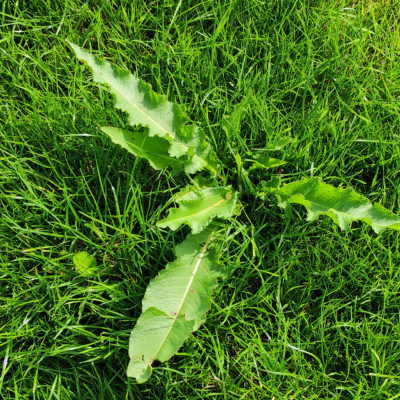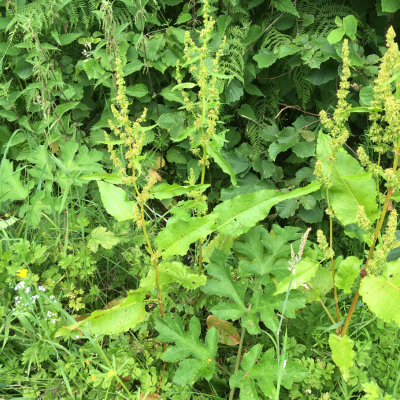Curled docks thrive in intensively used and highly fertilised grassland and produce up to 40,000 seeds.
Curled dock

What is curled dock?
Curled docks (Rumex crispus) tend to be much shorter lived than broad-leaved dock (Rumex obtusifolius) and can behave as an annual or biennial in some situations, with plants dying after flowering.

Biology
Curled docks thrive in intensively used and highly fertilised grassland.
Plants can produce up to 40,000 seeds.
Seeds can remain viable for up to 80 years.
Plants have deep tap roots (up to 1.5m).
Plants can regenerate from root fragments.
Curled docks can grow between 50–120cm tall.
How can I identify curled docks?
Growth habit can be quite erect in comparison to broad-leaved dock with narrower leaves, thus reducing the spray target.
They have narrower leaves, which are usually at least three times long as wide, and the leaf margins are often wavy long leaves with wavy edges and plants flower from June to July.
The flowering stems are much less branched than those of broad-leaved dock and tend to be carried close to the main stem.

Curled dock close up

Curled dock in seed
Why are curled docks a problem?
Docks are the most pernicious and damaging of all grassland weeds.
Docks compete with grass for light, water and nutrients and thus reduces grass yields, with more than 15% of productive grassland having a serious dock infestation.
Docks have only 65% of the feed value of grass and grazing losses amount to more than £30 million/year.
They are classified as an injurious weed, so should not be allowed to spread, or seed.
Presence of docks in silage can affect fermentation, thus reducing overall quality.
How do I control curled docks?
Control at the rosette stage, from 150mm to 250mm across or high, when plants are young and actively growing is the optimal timing for control.
Topping the plants is not enough, neither is intensive grazing or silage cutting, as the deep tap roots allow them to recover and set viable seeds.
Use Envy® or Leystar® in new sown leys to control seedling docks. Where docks have grown from root fragments and are stronger, Envy® is the best option.
Use Forefront® T when dealing with high populations and long-established populations in grazing ground. Alternatively use Doxstar® Pro, unless there nettles present, in this case use Pas®·Tor® Agronomy Pack.





Leystar® is a selective herbicide for use in newly sown leys, established grassland, grass for seed, forage maize, cereals and cereals under/sown with grass.
Envy controls buttercups, dandelions and other perennial weeds in paddocks and low productivity grassland.
Forefront® T delivers the highest levels of control of docks, thistles, nettles, ragwort, buttercups and dandelions.
Pas·Tor Agronomy Pack delivers long-lasting perennial weed control and is excellent for docks, thistles and nettles.
Doxstar® Pro is a concentrated formulation controlling all species of docks in established grassland.